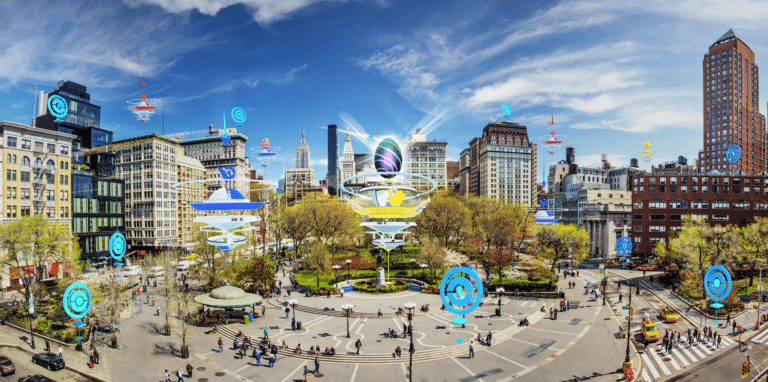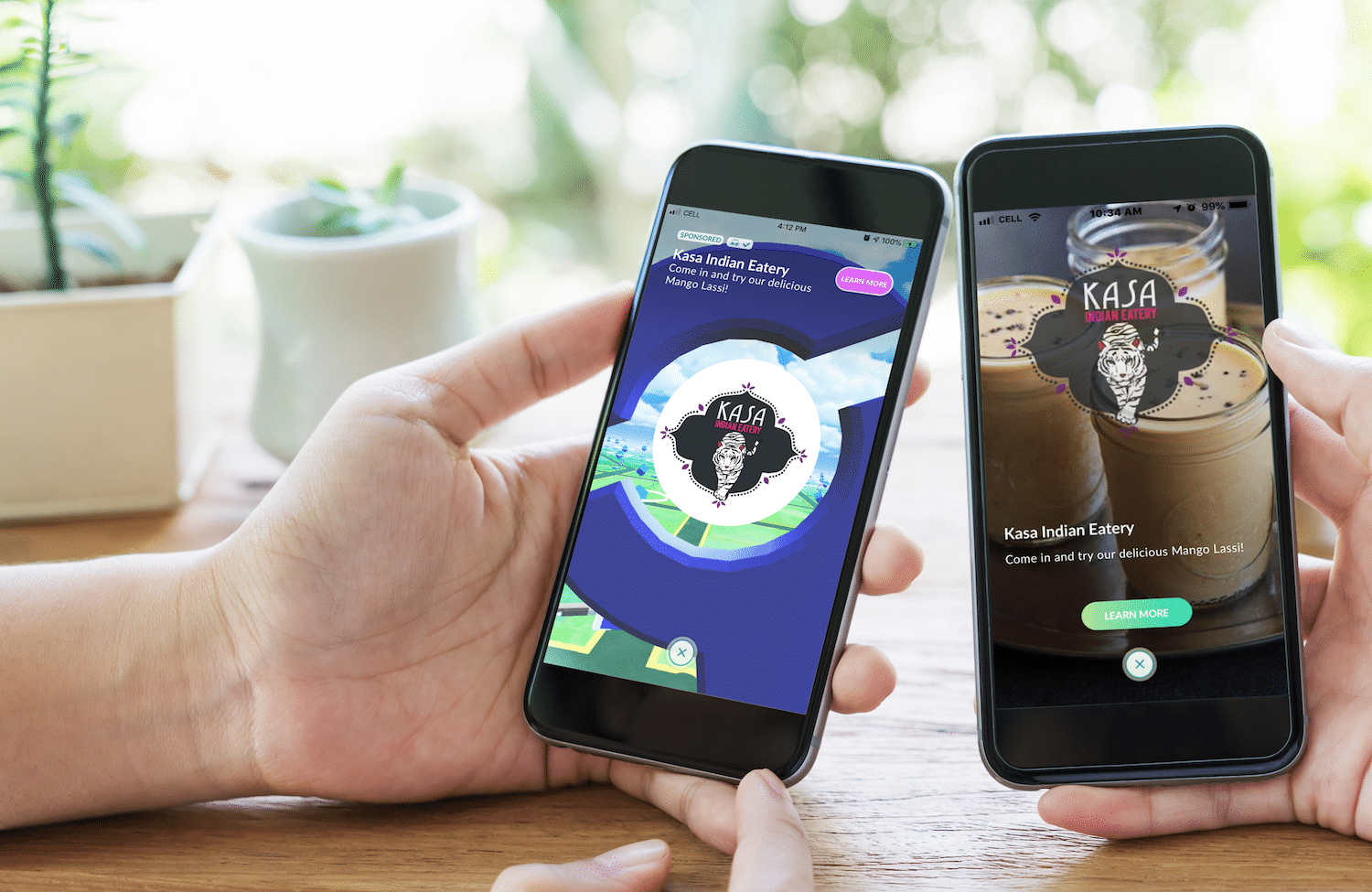
AR continues to show up on the list of emerging tech that helps local businesses boost revenue. Last week, we examined Uptown Networks’ AR-fueled restaurant gifting program. This follows a longer-running program from Niantic to help small businesses (SMBs) drive foot traffic.
In fact, one of the emerging “wild cards” for local marketing is Pokémon Go. Beyond its still-booming in-app-purchases model, it’s showing interest in tapping the long tail of SMB advertising. This plays out through organic in-game elements that send hordes of players to a given location.
As we’ve examined, this takes place through an extension of Niantic’s Wayfarer program that lets local businesses — SMBs or multi-location brands — pay to designate their locations as gyms and Pokéstops. These are the physical-world waypoints where in-game activity occurs.
The result is real-world foot traffic that’s driven by in-game mechanics. This can be a unique opportunity for local businesses in that it’s so nascent and competitors haven’t yet caught on. It’s particularly fitting for QSR, coffee (refuel for gameplay), or demographically-aligned products.
Psychographic Synerigies
In the category of demographically aligned local businesses, GameStop has started working with Pokémon Go in the above ways. The retailer’s products have demographic and psychographic synergies with Pokémon Go players, who tend to be young to middle-aged gamers.
Specifically, a four-month campaign started last month that designates 500 GameStop locations as Pokéstops. It’s too early to tell if it’s working but Niantic has shown in other cases that the program boosts foot traffic. Niantic CEO John Hanke positions it as the “anti-Amazon.”
As for the elephant in the room — a global pandemic — Niantic has demonstrated ample attention and ingenuity in pivoting its UX to Covid-era realities. This is notable for a game that’s so reliant on the physical-world, and includes revamped game mechanics for socially-distanced play.
As it relates to its ad offering — and GameStop’s campaign in particular — Niantic has amped up in-game communications to stress partners’ business protocols (think: mask policies). If anything, Covid-19 could end up driving more companies to boost waning holiday foot traffic in these ways.
GameStop is particularly motivated to do so, given sales declines. It reported a 13 percent year-over-year drop in same-store sales and a 27 percent drop in net sales in Q3. This was offset to some degree by 800 percent eCommerce growth but it’s still driven to reverse foot-traffic declines.

Meaningful Fusion
Though GameStop is a chain, it signals opportunities that are equally available to SMBs. Like several other forms of emerging marketing tech, it often starts at the brand level before moving down-market to SMBs. That’s partly due to brands’ savvy and dedicated marketing resources.
In either case, retailer declines are the inverse of Niantic’s 2020 engagement and revenue inflections noted above. This could attract more multi-location brands and SMBs, given that Niantic has done what they can’t do on their own in boosting physical-world engagement.
Beyond driving foot traffic, Niantic’s separate “mapping tasks” program incentivizes players to scan local waypoints. This is part of Niantic’s effort to build spatial maps for its Real World Platform, but could have implications for driving local commerce, similar to Google’s Live View.
Stepping back, Pokémon Go is often considered to be AR (though there’s some debate). Digital overlays on the real world when catching Pokemon fits the definition. But on another level, driving real-world behavior through mobile gaming is a more meaningful form of digital-physical fusion.






